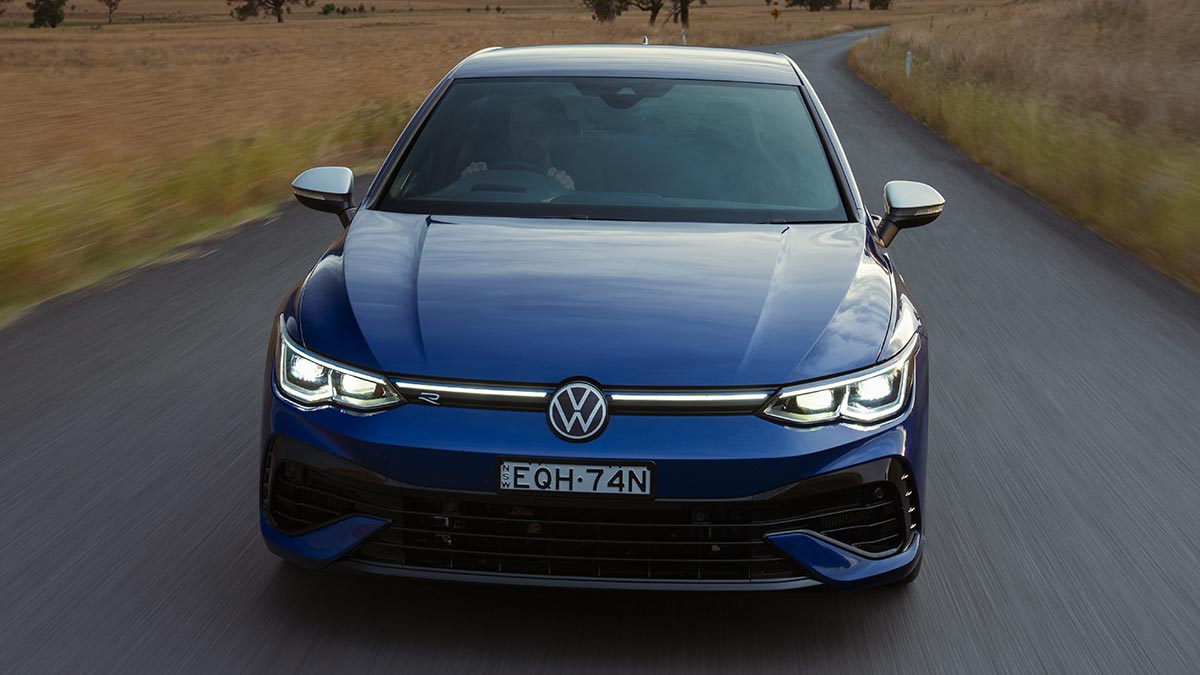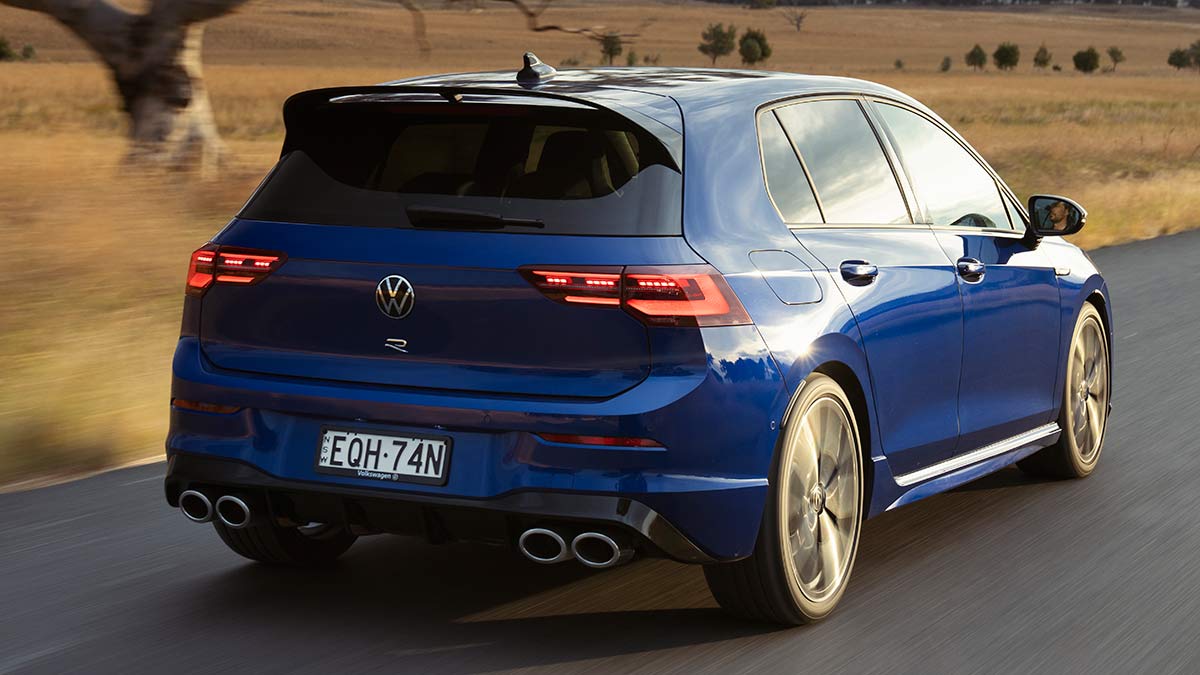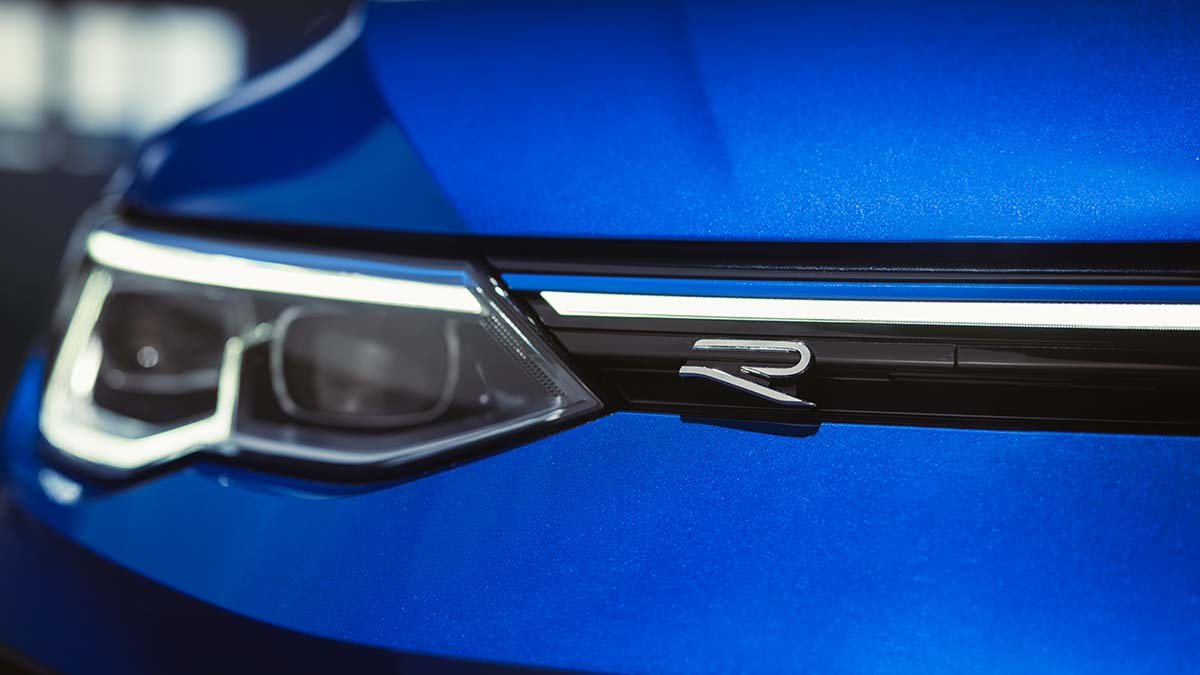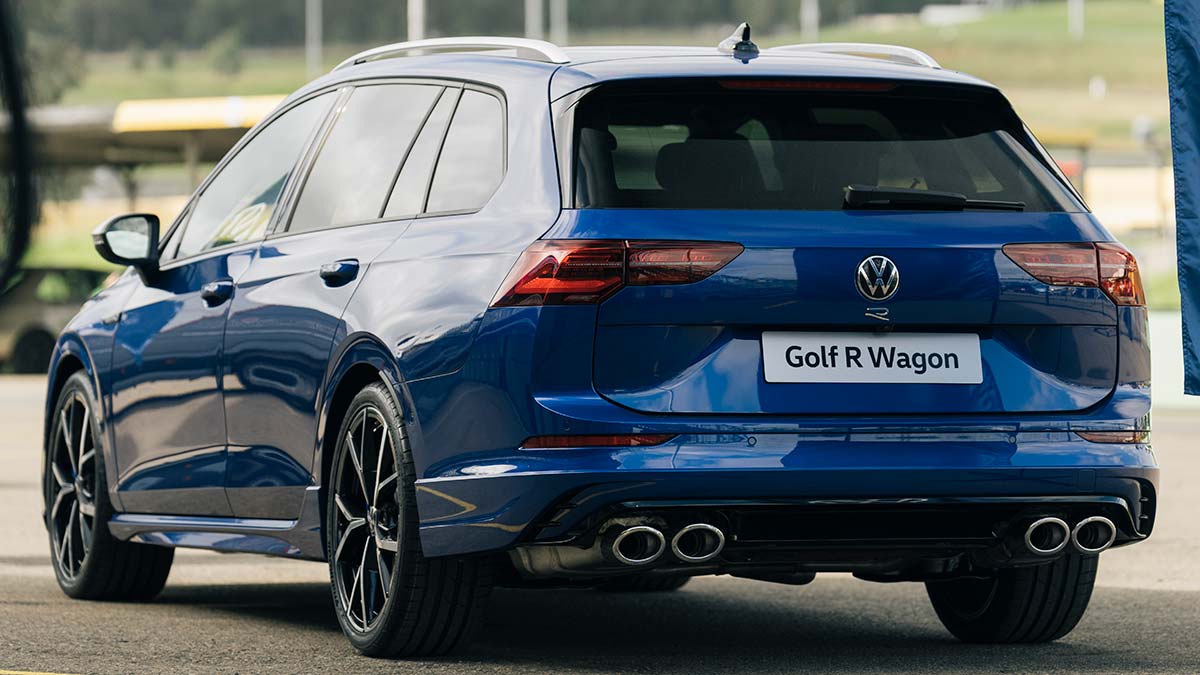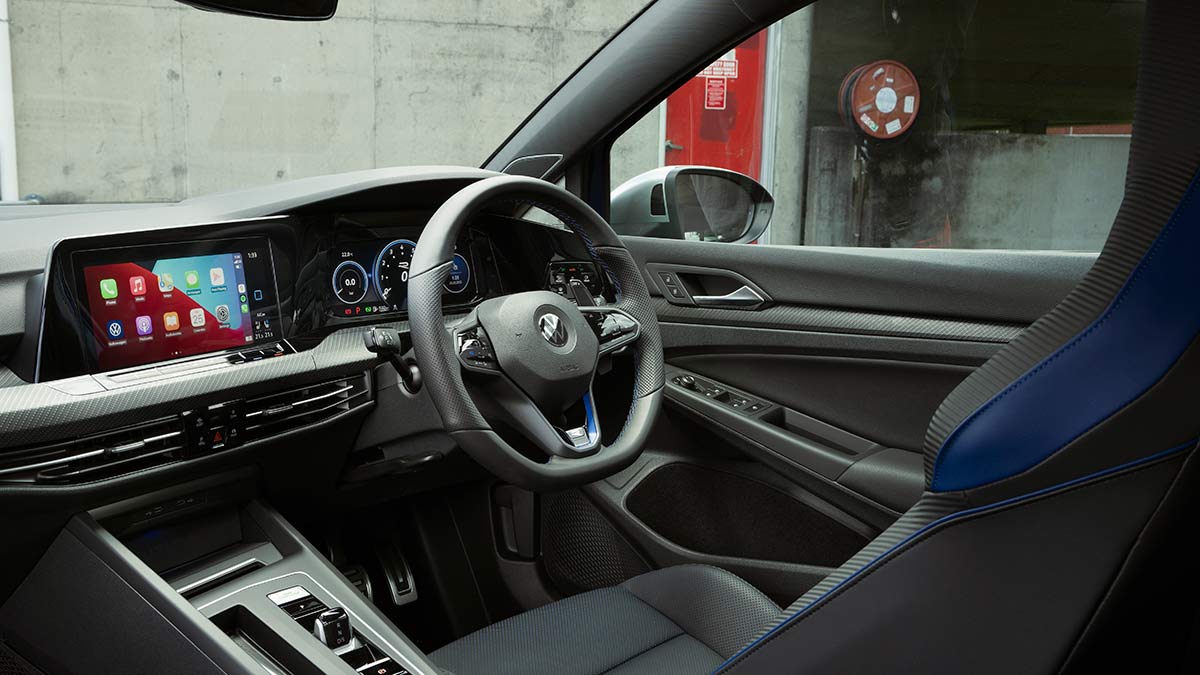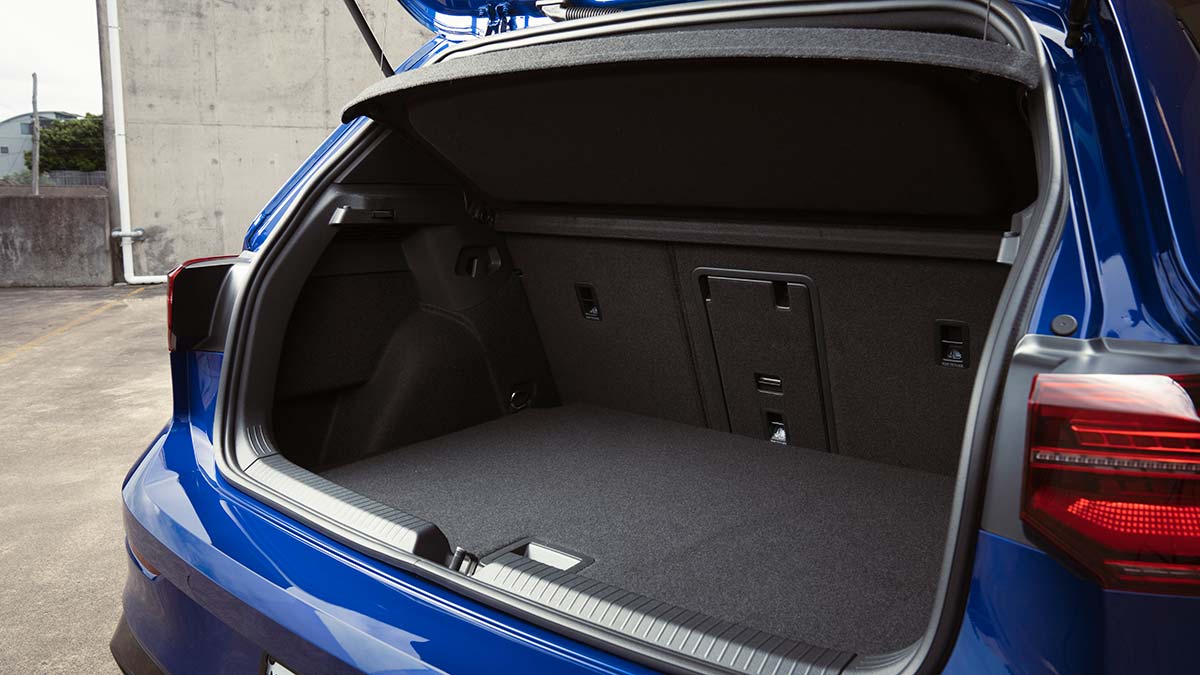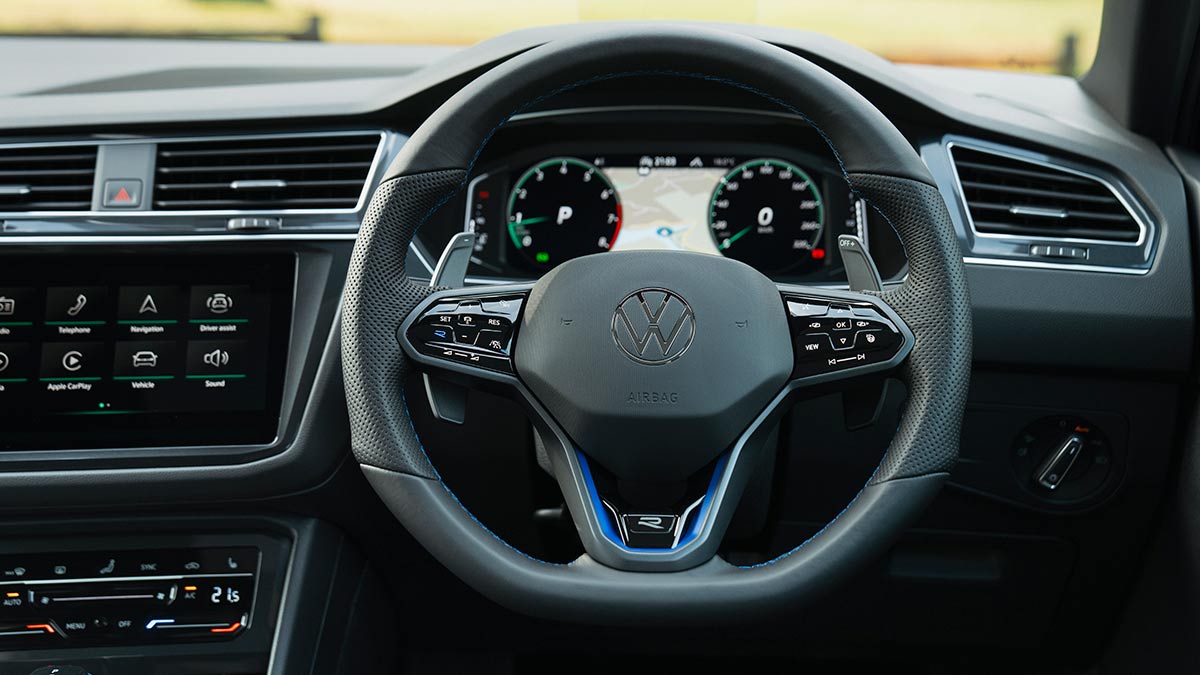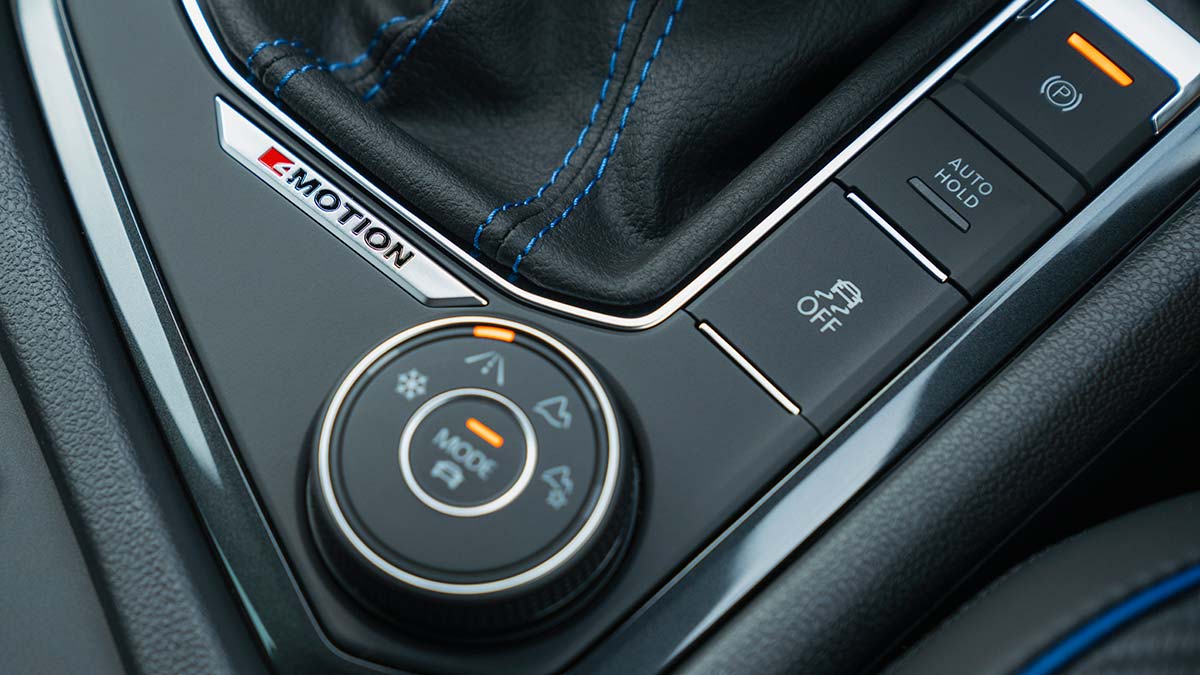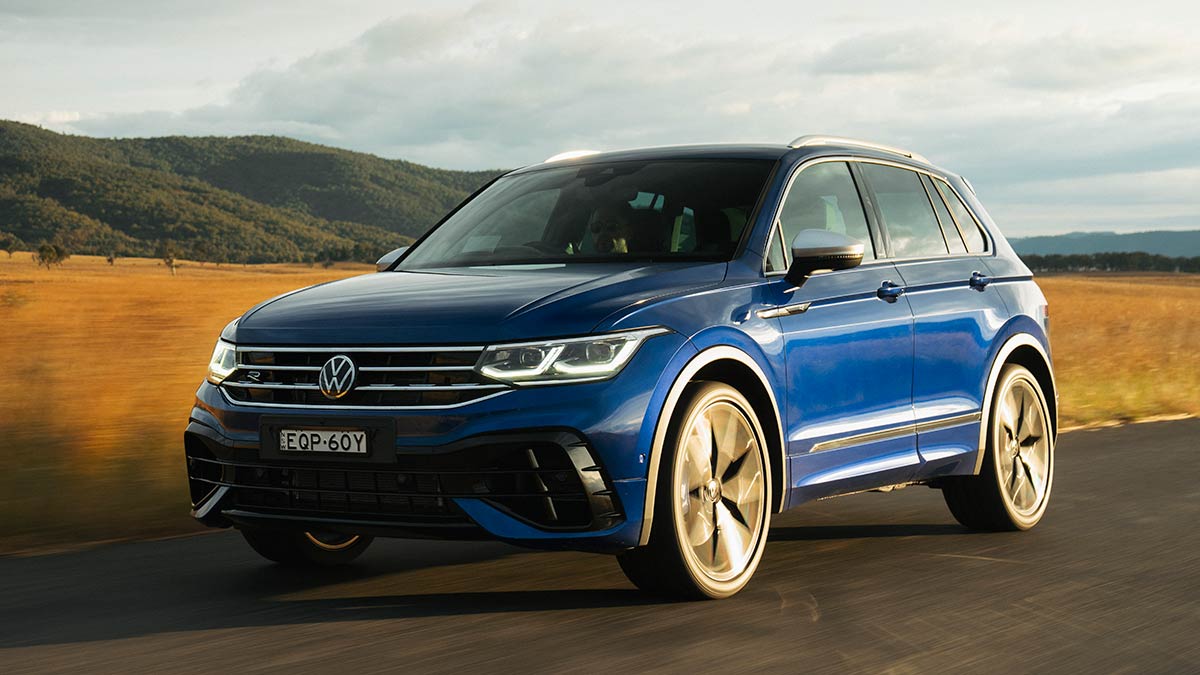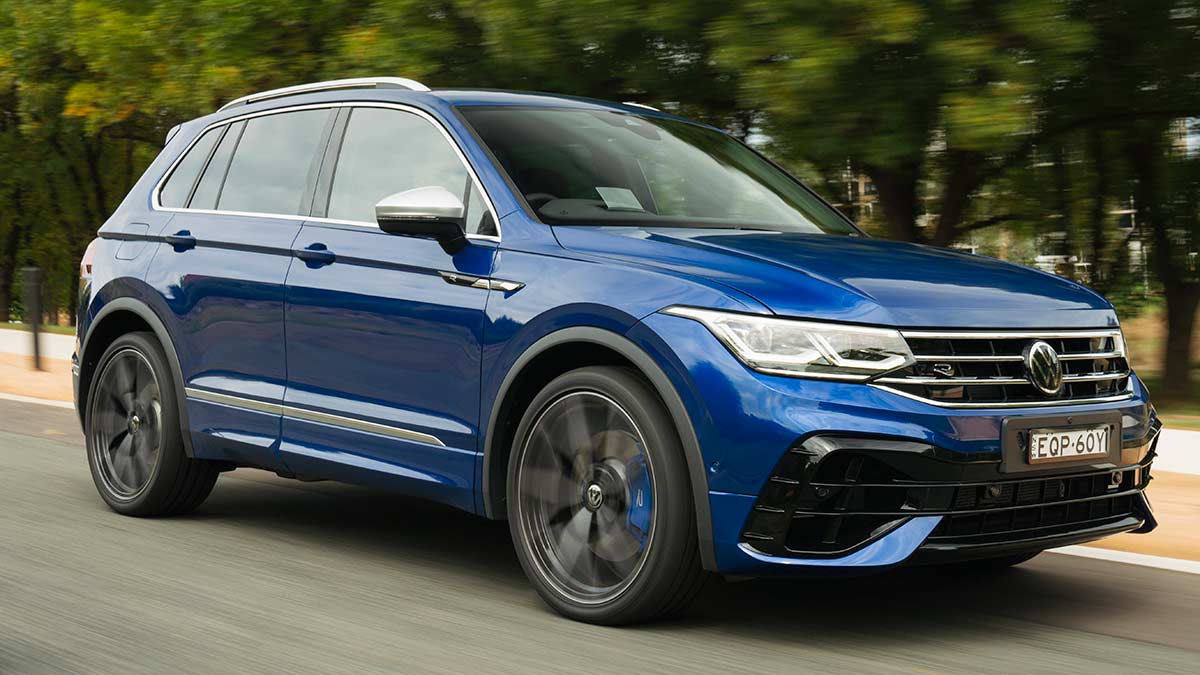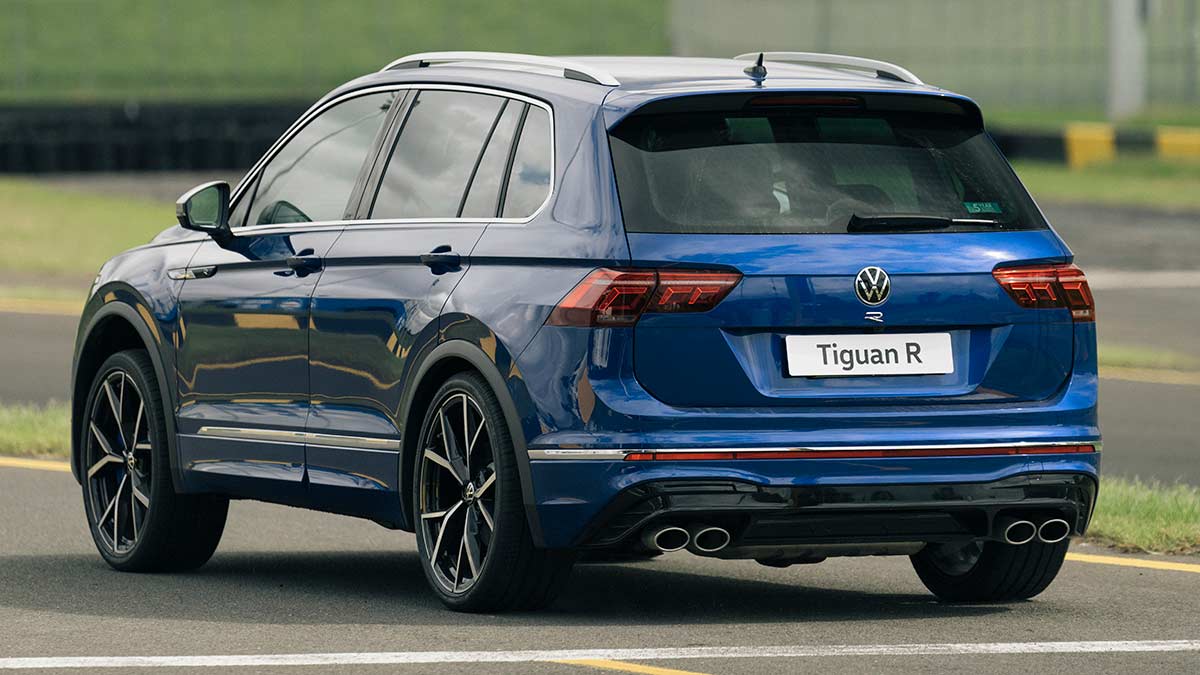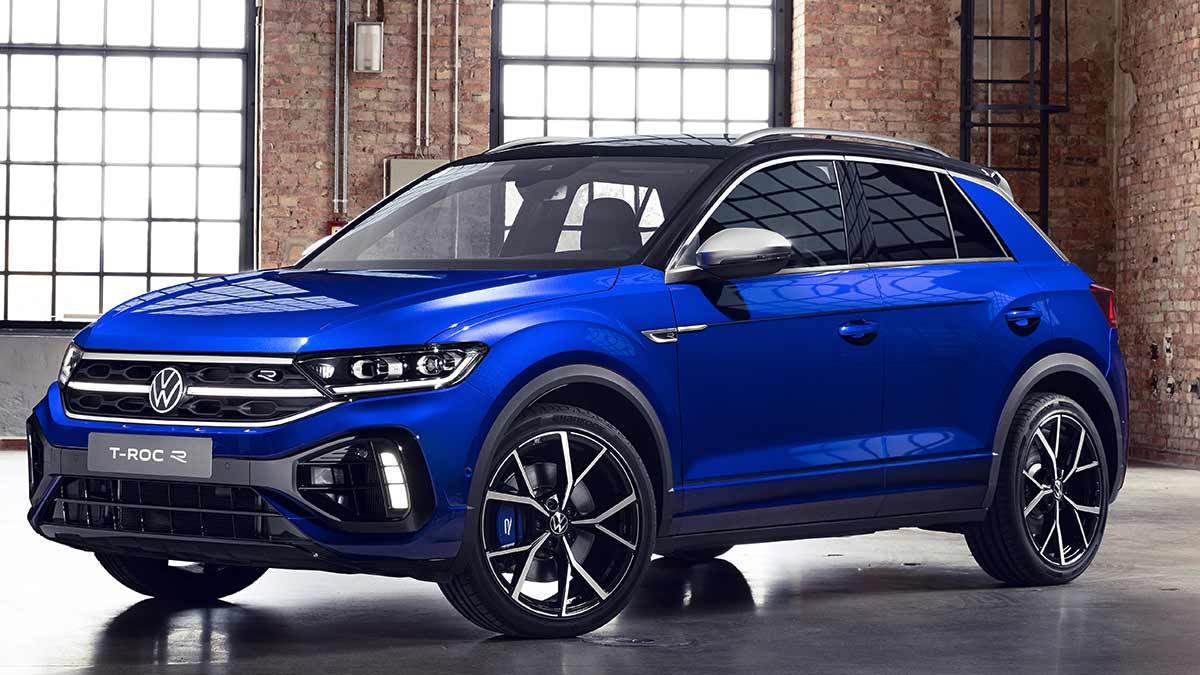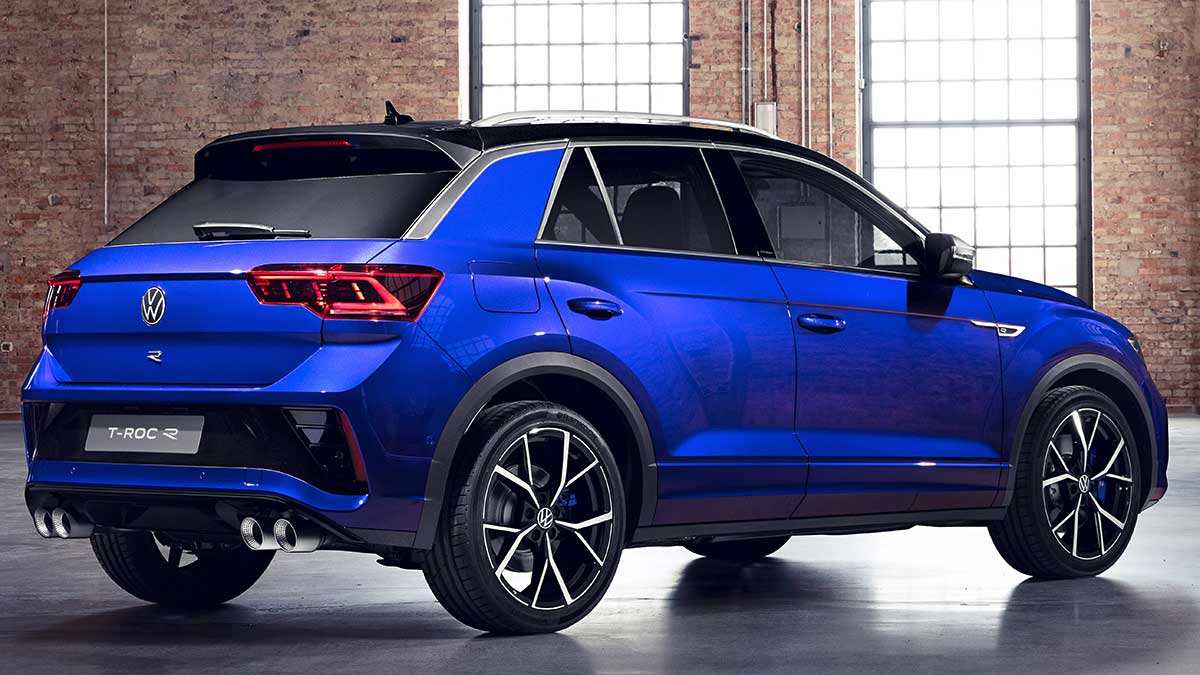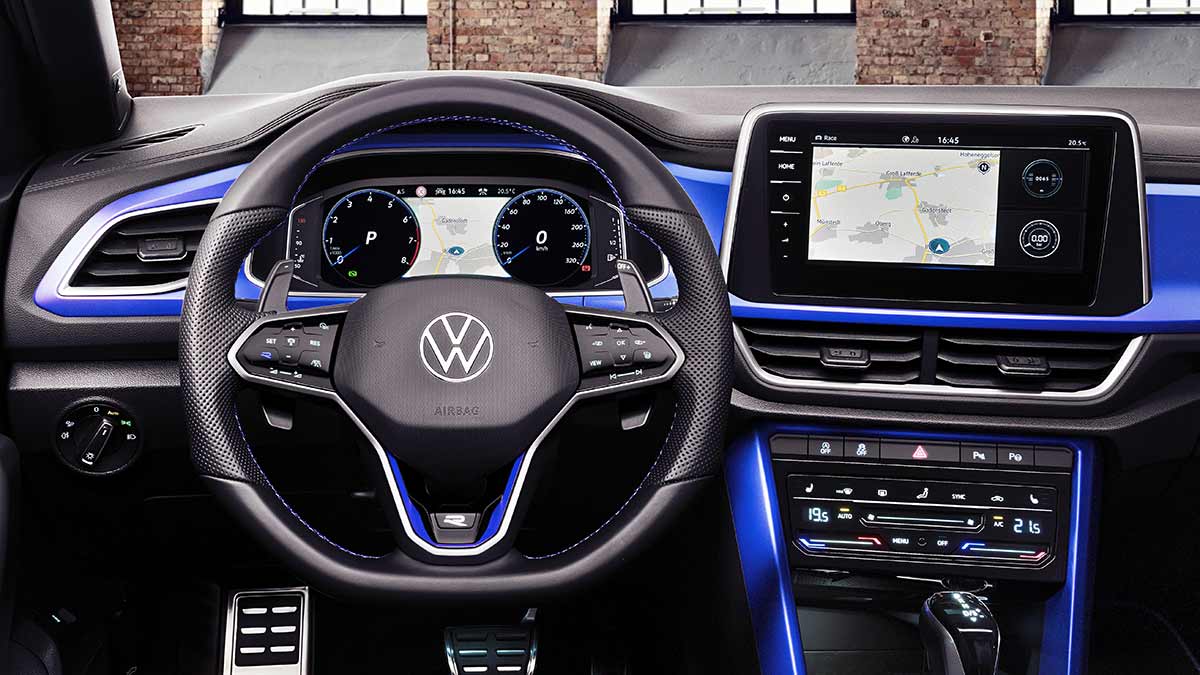The Foton Tunland joins Australia's dual-cab ute market as an affordable mild-hybrid diesel under $50,000, offering strong capability against tough competition.
2022 Volkswagen Tiguan R and Golf R first drive review

Performance cars are more than a numbers game. Hyundai has N, BMW has M … and Volkswagen’s enthusiast-oriented vehicles are R-rated.
Everyone reacts to criticism. Some don’t cope well, others pretend it doesn’t apply to them. And then there are those who respond aggressively.
Volkswagen’s Golf R falls into the latter category. The last version was derided as being too conservatively corporate. Fast without being fun.
The 2022 instalment should silence most of the critics. The outright performance is unchanged from the Mark 7.5 Golf R, but this version has had an attitude adjustment and is a much more compelling car for it.
It doesn’t look overtly alluring but push the right buttons and the Golf R goes off.
The Tiguan R, however, is a clean-sheet approach to delivering a performance SUV. There are no natural competitors, so for now it is the apex predator of the mainstream mid-sized SUV ranks.
On this page
- How much do the VW Golf R and Tiguan R cost?
- How safe are they?
- What's are they like inside?
- What's under the bonnet?
- Are they efficient?
- How do they drive?
- Should I buy one?
- More VW R models on the way?
How much do the VW Golf R and Tiguan R cost?
The Golf R’s sticker price is $65,990 plus on-road costs, which the VW website says works out to be $72,767 driveaway (the soon-to-arrive Golf R wagon is $2000 more expensive).
The Tiguan R SUV costs $68,990 plus on-roads, or $78,196 in your garage.
Options on both models are restricted to a panoramic sunroof ($1900 on the Golf R, $2000 on the wagon and Tiguan R) and a 10-speaker 480-watt Harmon/Kardon sound system for $1000.
The five available exterior colours are all no-cost, so buyers can choose from white, silver, grey, black and the signature blue. Expect to see a lot of blue ones.
All vehicles are covered by a five-year unlimited kilometre warranty. Service pack pricing over that period is $3000 for the Golf and $3100 for the Tiguan.
The Golf R’s pricing is approaching premium levels. You can buy a closely related Audi S3 for $70,700 plus on-roads, or a Mercedes-AMG A35 for just under $78,000.
Mainstream rivals tend to be front-wheel drive, typified by the Hyundai i30 N Premium hatch at $47,500 plus on-roads.
As mentioned previously, the Tiguan R has no peers this side of the prestige pack. Expect that to change when rivals see the sales figures for this performance-oriented SUV.
How safe are the Volkswagen Golf R and Tiguan R?
ANCAP rated the Golf a five-star car when it was tested in 2019. The R variant is based on that platform, so the rating still applies. Eight airbags are standard and the safety assist features cover the range, including autonomous emergency braking with cyclist and pedestrian detection.
Adult occupant protection was scored at 95 per cent, child occupant protection rated 89 per cent, vulnerable road user protection came in at 76 per cent and the Golf earned an 80 per cent mark for safety assist features.
The Tiguan R inherits a five-star rating bestowed on the regular mid-sized SUV back in 2016.
ANCAP scored it at 96 per cent for adult occupant protection, 80 per cent for child occupant protection and 68 per cent for both vulnerable road user protection and safety assist software.
What are the VW Golf R and Tiguan R like inside?
Digital displays are the name of the game for both of these vehicles. There’s a 9.2-inch infotainment touchscreen, coupled with a digital driver’s screen that can be configured in a variety of ways.
Twin USB ports are packed ahead of the wireless phone charger up front, with another pair down back for rear-seat passengers.
R logos adorn most surfaces, from the front seats to the facia. Tiguan R product manager Glenn Reid says he counted more than 20 “R” insignias. Talk about branding …
The cloth seats on the Golf R are welcomingly supportive: as good as leather looks, it doesn’t hold the body in place as well during high-speed cornering.
The Tiguan R’s front pews are just as supportive. Yours truly survived a trip from Sydney to Melbourne with only a hint of “numb bum” as the SUV entered the Western Ring Road.
Rear seat space in the Golf and Tiguan is more than amenable for adults. The Golf’s cargo capacity is 395 litres; the Tiguan boasts 615.
The Golf R wagon cedes four litres to the Tiguan in outright capacity but for items like golf clubs and mountain bikes its extra 40 mm of length makes it the pick of this trio.
What’s under the bonnet of the VW Golf R and Tiguan R?
VW’s proven EA888 2.0-litre four-cylinder turbo engine features on both these vehicles. Outputs for the Golf R and Tiguan R are 235kW and 400Nm.
The Golf R wagon delivers an extra 20Nm of torque. It is the only one of this trio fitted with a petrol particulate filter. Given the quality of Australian fuel, that’s a welcome addition that should keep the fuel injectors cleaner for longer.
Performance figures are officially stated at 4.8 seconds for the Golf R hatch, 4.9 seconds for the wagon and 5.1 seconds for the Tiguan R.
Seat-of-the-pants experience indicates that’s achievable, particularly as all three have an easy-to-operate launch control.
Using it on public roads isn’t advisable, though the fact the all-wheel-drive layout doesn’t spin the wheels on take-off should ensure it won’t fall afoul of Victoria’s hoon legislation.
Are the Volkswagen Golf R and Tiguan R efficient?
No one expects a performance car to perform in the economy stakes. It’s like expecting a thoroughbred horse to run well while eating grass.
In the case of the VW Golf R, fuel use is stated at 7.8 litres/100km for the hatch and 7.4 litres for the (heavier) wagon on the combined cycle. Around town those figures climb to 10.1 litres and 9.4 litres respectively.
The Tiguan R uses a claimed 8.8 litres/100km with a mix of city and freeway driving, or 11.1 litres in urban situations.
All of these vehicles are recommended to run on 98 RON fuel. Hang on to your wallet.
How do the VW Golf R and Tiguan R drive?
Straight-line acceleration is impressive … but anyone can go fast in a straight line.
Push the Golf R through the corners and its torque-vectoring rear axle transmits torque to the outside tyre to keep the car rotating through the bends, rather than understeering into the scenery.
The Tiguan R shares the same tech but misses out on the Golf’s “drift” mode.
Simply put, on a dedicated skid pan the Golf R can be pushed into drifts that Ken Block would appreciate.
The software setting sends up to 100 per cent of available torque to the outside rear wheel to keep the Golf R screaming and screeching around a witches-hat denoted circle.
Ridiculous fun … and certainly not road recommended.
The race mode puts the Tiguan and Golf into a focused and ferious setting. The adaptive dampers stiffen up to minimise roll and you can feel the torque vectoring and electronic diff lock doing their thing to keep the car pointing where you’ve directed it.
The brakes didn’t suffer from fade (where the pedal travel gets longer and stopping distances increase) despite a day’s punishment at the Sydney Motorsport Park.
One of the few quibbles is the fact these machines default into Sports mode every time they’re started.
It is nowhere near as aggressive as the Race setting but the Comfort mode is the preferred position in urban environments, given the adaptive dampers adopt their softest setting to cope with road ruts.
Push the R button on the chunky steering wheel and it’s easy to select any mode, but it would be nice if the R’s could remember what setting they’d last been used in.
The Golf R rides on 19-inch alloy wheels and the ride (when in Comfort) is more cossetting than the Tiguan riding on 21-inch tyres, which can be fidgety over ruts and bumps, especially at low speeds.
In contrast, the Golf R could be used as a daily driver and passengers would struggle to know they’re not in a vanilla version of the same car.
Should I buy one?
I’d take the extra versatility of the Golf R wagon over the parking convenience of the hatch, but I know I’ll be in the minority.
The hatch is a lot of car for a serious price. If you can afford it, then you can probably afford to look at the Audi S3, but you’ll find much of the standard gear on the VW is an option on its more prestigious sibling.
For now, the Tiguan R rides unchallenged as the outstanding mainstream mid-sized SUV with a performance bias.
More VW R models to be unveiled
Volkwagen has two more R-spec vehicles to launch before the end of the year.
The compact T-Roc SUV is due in August, followed by the large Touareg SUV before year’s end.
VW hasn’t released details of the Touareg yet, but did share what we can expect from the T-Roc.
The four-cylinder turbo four is good for 221kW and 400Nm in this guise, along with adaptive chassis control.
The small SUV will ride on 19-inch alloy wheels, have tinted rear glass, wireless phone charging and employs the same 9.2-inch touchscreen found in its bigger brothers.
Pricing starts at $59,300 before on-road costs.
The information provided is general advice only. Before making any decisions please consider your own circumstances and the Product Disclosure Statement and Target Market Determinations. For copies, visit racv.com.au. As distributor, RACV Insurance Services Pty Ltd AFS Licence No. 230039 receives commission for each policy sold or renewed. Product(s) issued by Insurance Manufacturers of Australia ABN 93 004 208 084 AFS Licence No. 227678.
